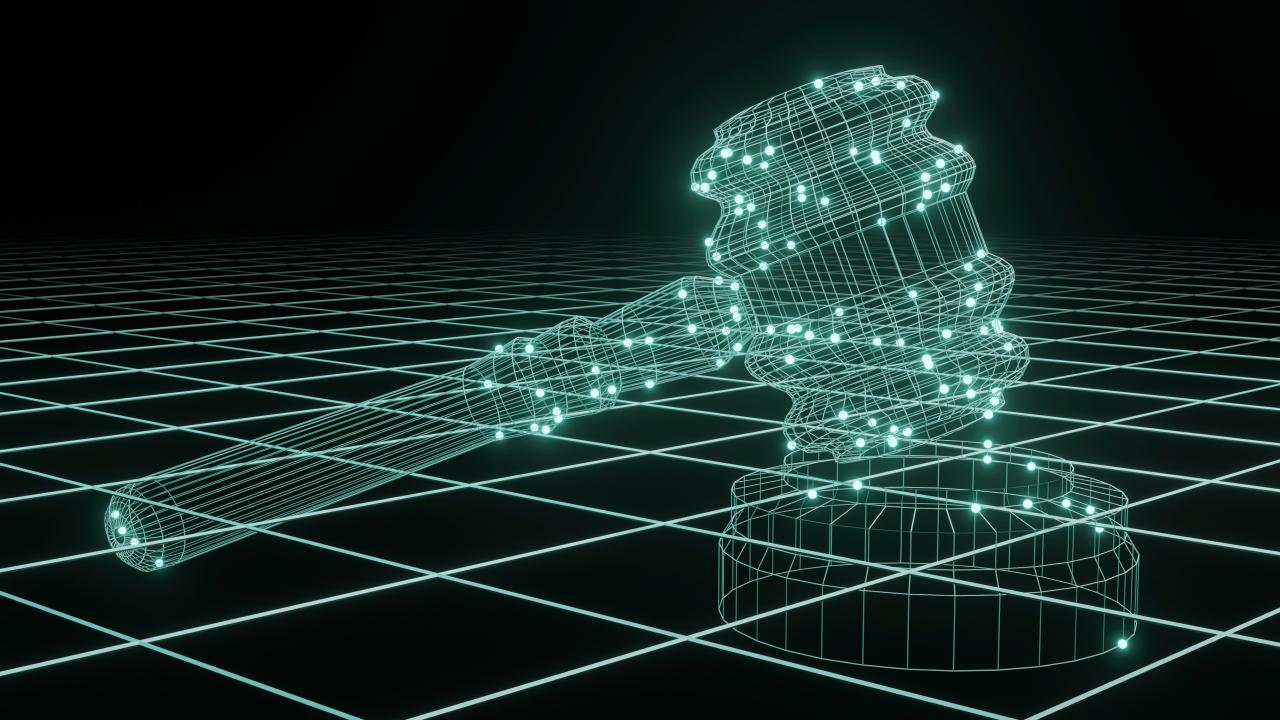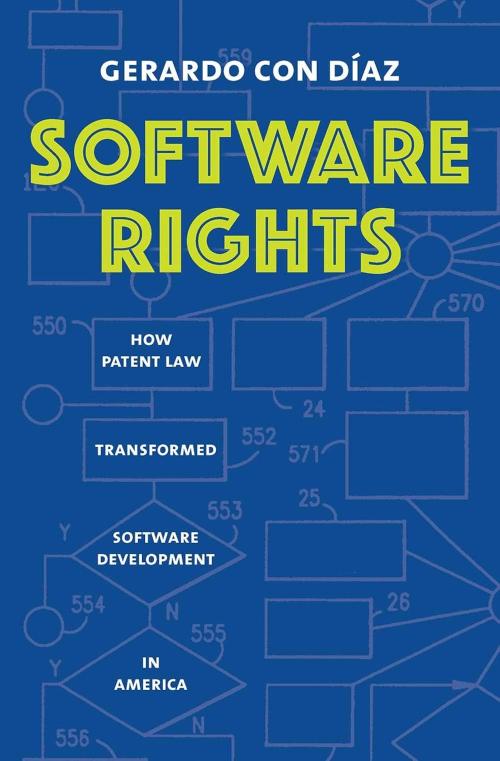
How Patent and Copyright Laws Shape the Digital World with Gerardo Con Diaz
For most of his adolescence, Gerardo Con Diaz viewed the world through the prism of mathematics. He excelled at numbers and computation, winning mathematics competitions while growing up in Costa Rica and later majoring in the subject while studying at Harvard University. He was enroute to a mathematics career, but something was off.
“There was this nagging sensation that there might be a path I hadn’t considered,” Diaz recalled.
Encouraged by an academic advisor to explore courses outside of mathematics, Diaz dove into the humanities. A class on the history of evolutionary thought changed everything.
“Suddenly I realized that science was not this objective thing that just descended upon us. It’s a deeply human process,” Diaz said. “Things that I thought were just value-neutral statements about the nature of the natural world and the universe were human creations. That just completely blew my mind.”

The experience changed the course of Diaz’s academic journey. When he went to graduate school at Yale University, he didn’t further pursue mathematics. Instead, he studied the history and philosophy of science and medicine.
Now, as an associate professor in the Department of Science and Technology Studies at UC Davis, Diaz investigates how law and policy shape the digital world.
“All my research so far boils down to the question of, what does it mean to own something?” Diaz said.
The history of software rights and patent law
In the 1960s and 1970s, IBM dominated the computer market, but tiny software startups dotted the landscape, the companies trying to succeed while living in the shadow of the behemoth. One such company was Applied Data Research (ADR).
In the 1960s, ADR developed a program called Autoflow to assist programmers with creating software flowcharts. Autoflow could run on various machines, including IBM hardware, and ADR started touting its program’s performance efficiency.
“IBM was very worried because if all these little players started owning their own software, then IBM’s own costs could increase suddenly,” said Diaz, who initially wrote about the subject in IEEE Annals of the History of Computing. “These companies could start eroding IBM’s market dominance.”
In 1967, before ADR secured a patent for Autoflow, IBM decided to release a similar program called Flowchart. It planned to give the program away for free by bundling it with the purchase of its hardware.
“The software companies turned to patent law and what they were saying is: Software is just another invention that you can own with a patent, just like a car. It’s a thing you can own,” Diaz said. “IBM went to the same courts and argued that software is not a machine. Software is a text, so it’s protected by copyrights and not patents, so you can only own the text. This was a foundational moment where software was all these things at once and yet none of them.”

ADR eventually secured a patent for its Autoflow program in 1970. By then, the Department of Justice had been conducting an antitrust investigation into IBM for its bundling practices, motivating the company to cease such practices and to charge separately for its software programs.
“These conceptions of what software is become foundational to business strategies and they end up being formative to the industrial dynamics,” Diaz said. “If a court had determined early on that software is a text, then all this patenting that happened afterward might not have happened at all.”
Diaz further explores this formative era in his book Software Rights: How Patent Law Transformed Software Development in America, which won the 2020 Computer History Museum Prize for best book on the history of computing.
“It’s the story of how corporations, users, markets and government agencies negotiated what it means to own software,” Diaz said.
From patents to copyrights and the question of AI
Diaz recently finished the manuscript for his second book, Everyone Breaks These Laws, on copyrights and the Internet.
“The book is about the often-imperceptible ways in which copyright law has shaped how we experience the online world,” Diaz said. “The big point I’m trying to make is that copyrights condition, enable or restrict what we can do, even when we can’t tell.”
“There have been moments when a single court opinion on copyright law completely changed what the online world is like,” Diaz added.
One example Diaz points to is a 2005 lawsuit between Perfect 10, a men’s magazine and adult website, and Google.
“Perfect 10 was complaining to the courts that when users typed ‘Perfect 10’ into a search engine, they could see all their pictures of their models via thumbnails and therefore, people weren’t going to their website to look at the images,” Diaz said. “So Perfect 10 was losing profit.”
“Google responded with the strangest little argument,” Diaz continued. “They responded with the argument that when a search engine makes a thumbnail of an image found on the web, this thumbnail is no longer a creative work, it becomes something else. It becomes a technical object, an item in a database for data sorting. The argument became that when Google makes these thumbnails, their use of the image is so transformative that it is fair use.”
Fair use allows creators to use copyrighted material without permission under some circumstances. Examples can be seen in journalism, reviews, comedy and other types of social commentary. Think of parodies that incorporate material from the original source, or how teachers use images they found on the internet to illustrate their lectures.
The courts agreed and Google won the lawsuit. Had Perfect 10 won, search engines would be completely different than they are today. Perhaps, there wouldn’t even be an image search functionality.
With the advent of widespread artificial intelligence, issues of copyright law are reaching a pressure point as companies start using music, art and other human-created works to train AI models. Like Google before them, AI companies could argue that these creative works are transformed into technical objects when used as a training dataset.
“The point of this book is there have been all these moments where what it means to experience the online world depended on copyright law,” Diaz said. “By the end of the book, I hope readers see the online world as merely the latest version of a copyright system that powerful companies negotiate into being. It could be completely different had one firm or judge made a different decision.”
Diaz’s book will be released summer 2025.
